In Photos: Hurricane Maria Seen from Space
Lots of Rain
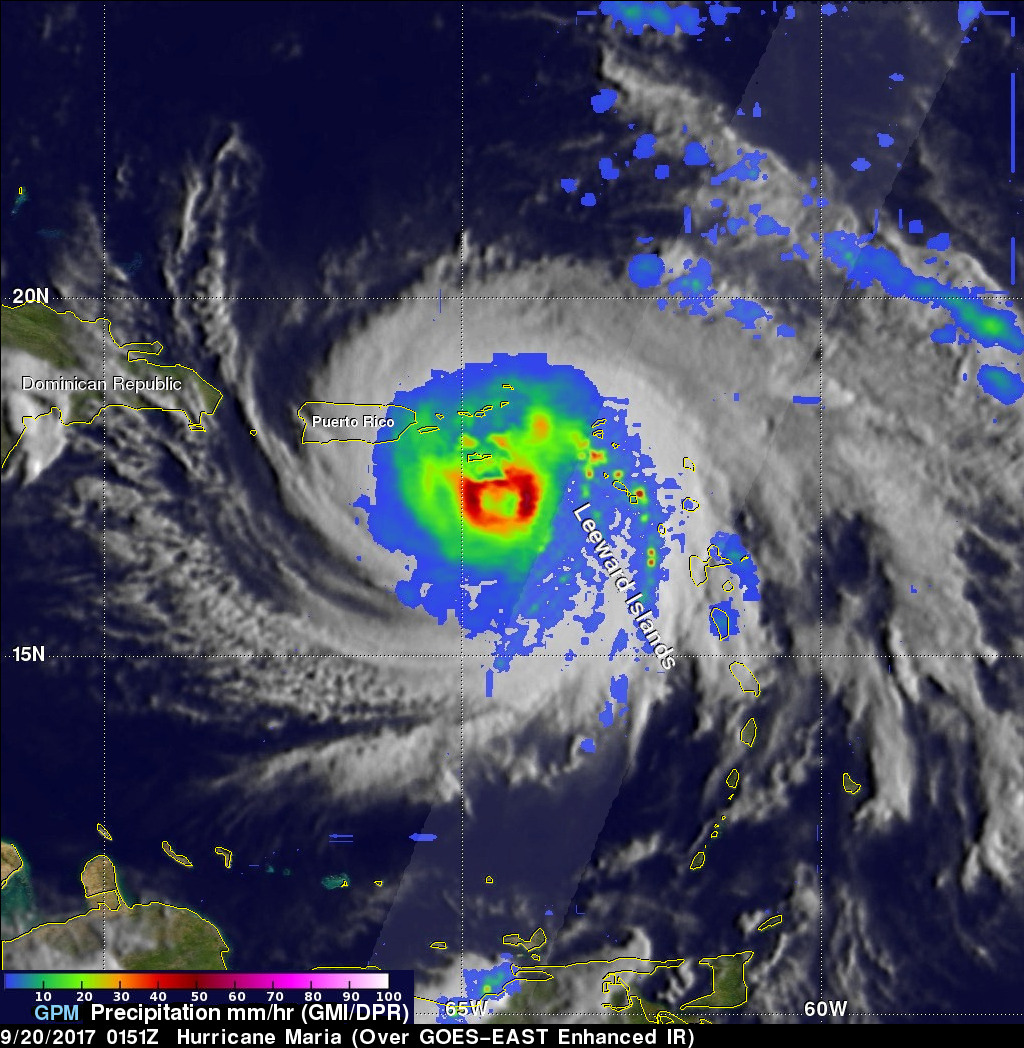
On Sept. 19, The GPM mission's radar measured extreme storms within Hurricane Maria with rain falling at over 5 inches per hour.
Warnings
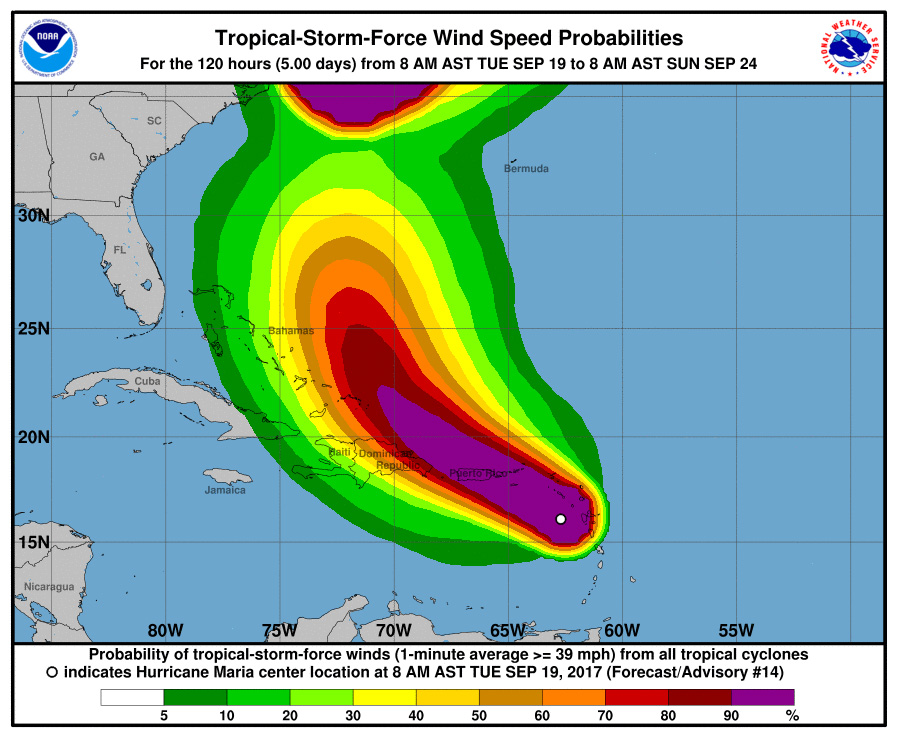
On Sept. 19, the NOAA issued a tropical-storm-force wind advisory that would remain in effect through Sept. 24.
Another Season
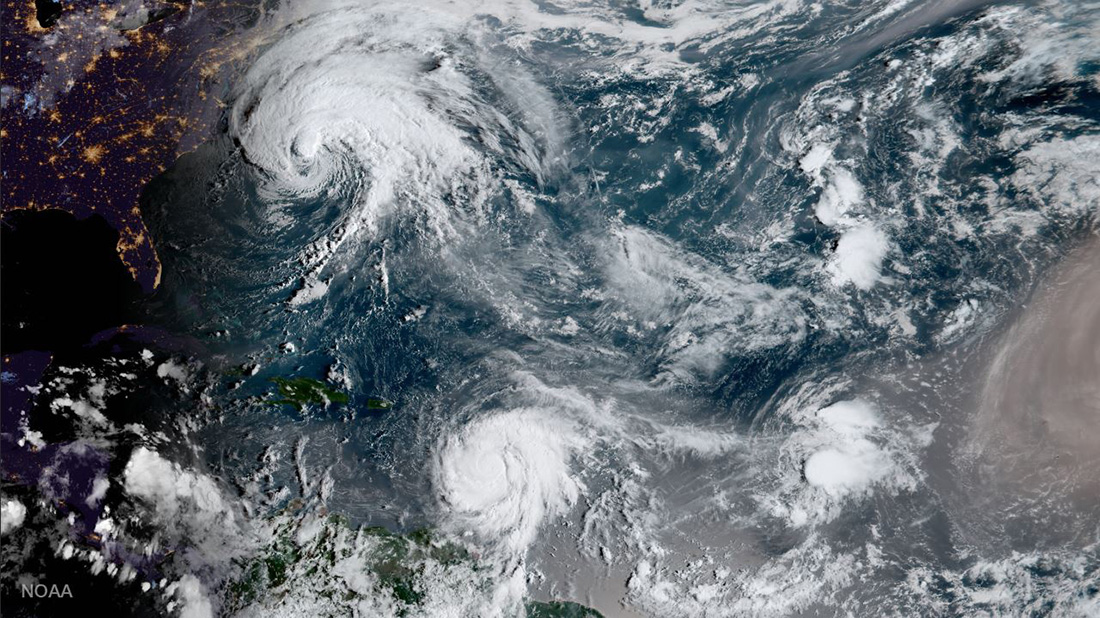
NOAA's GOES-16 captured this geocolor image of Hurricanes Jose and Maria and Tropical Depression Lee simultaneously churning through the Atlantic Ocean on Sept. 18.
Maria Approaches the Caribbean
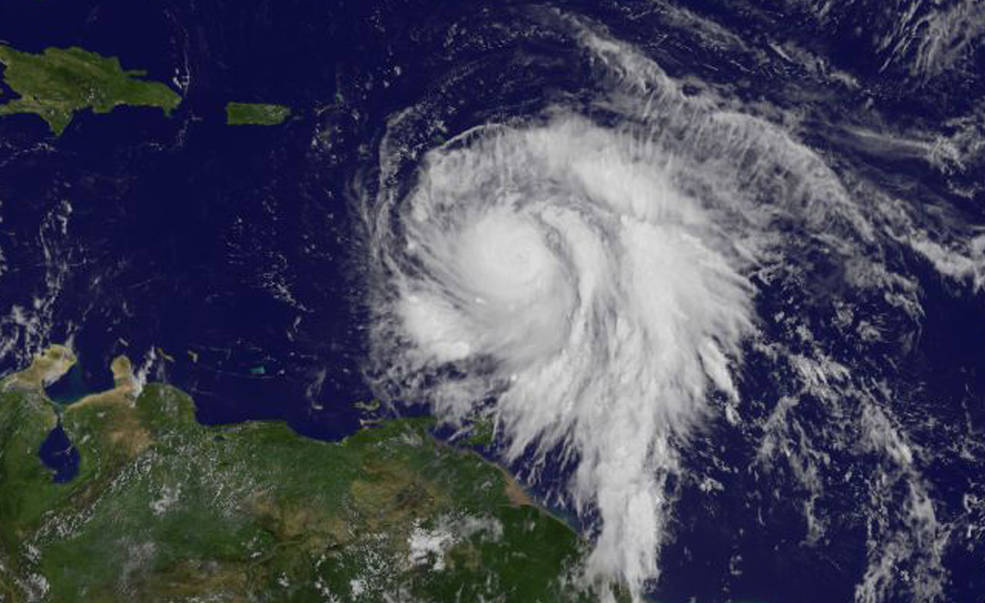
This image of Hurricane Maria was taken by NOAA's GOES East satellite on Sept. 18 at 10:45 a.m. EDT (1445 GMT) as it strengthened to a Category 3 hurricane just east of the Leeward Islands. Hurricane Maria made landfall on the Caribbean island of Dominica as a Category 5 storm later that day at 9:15 p.m. EDT (0115 GMT on Sept. 19).
Maria's Projected Path
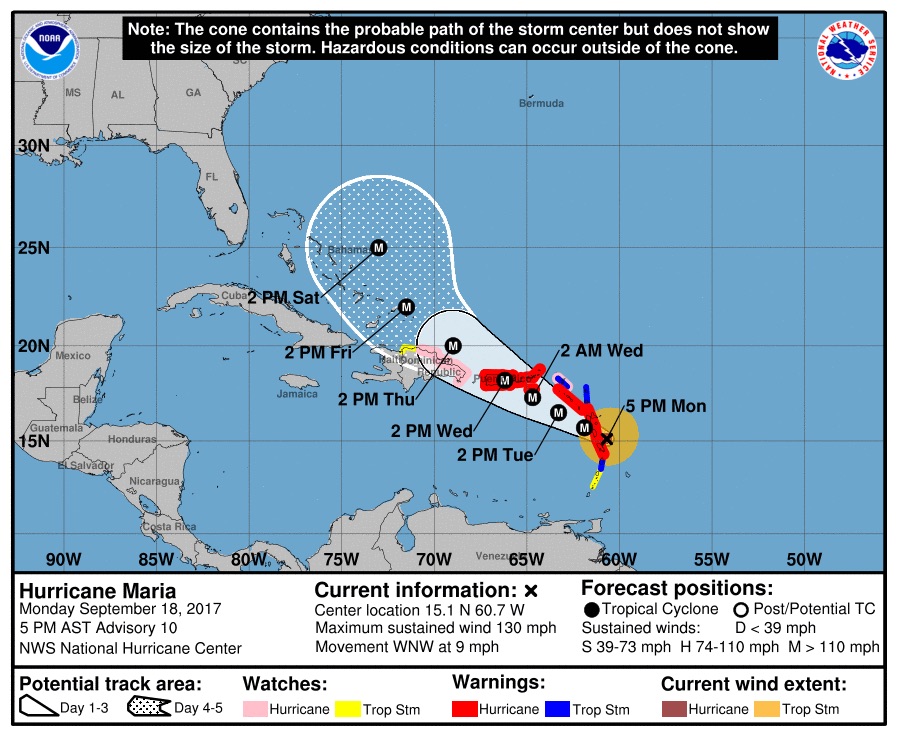
This graphic shows areas affected by Hurricane Maria, and the expected dates and times when the storm will arrive at those locations. The NOAA released this forecast on Sept. 18 at 5 p.m. EDT (2100 GMT).
Stormy Seas
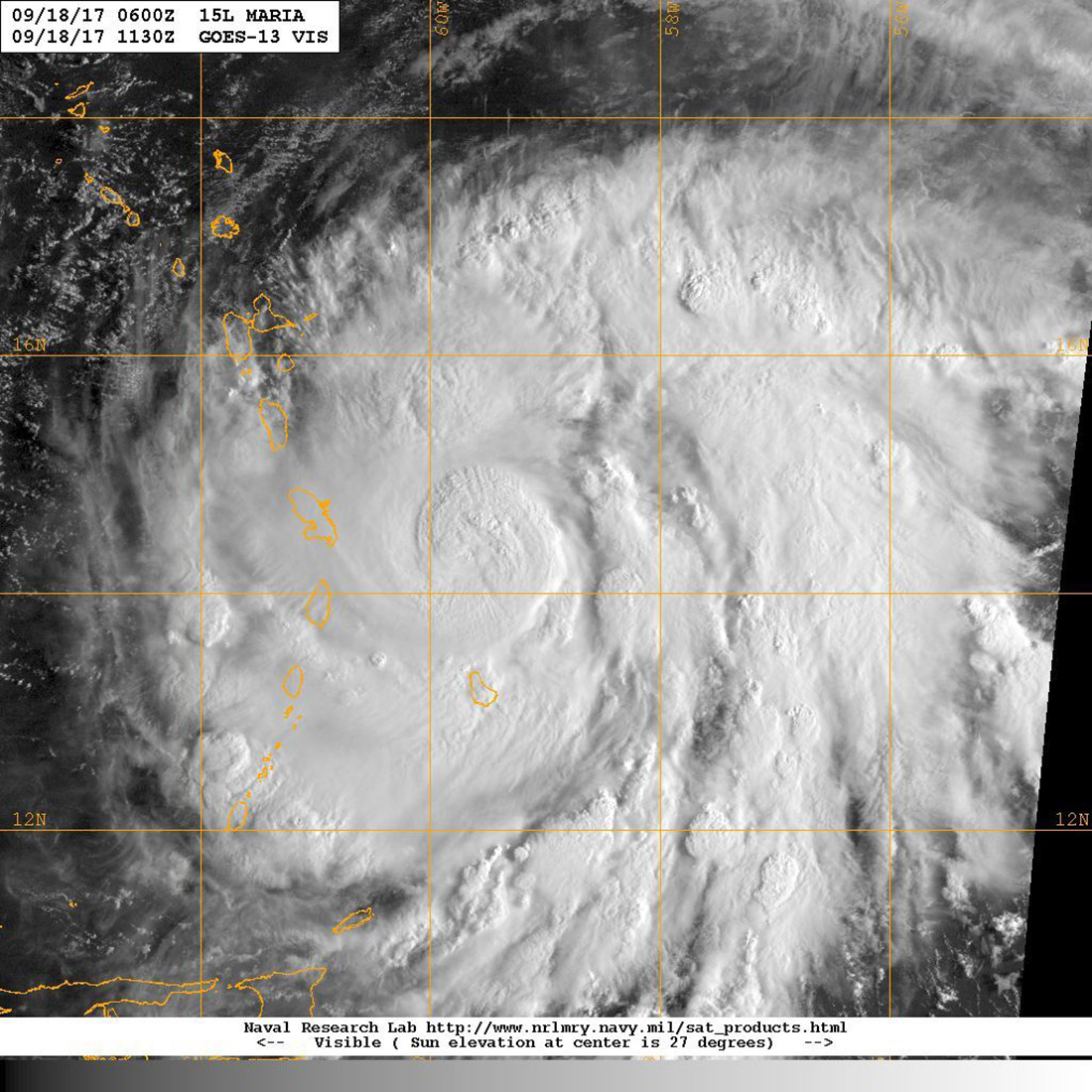
At a Category 1 storm, Hurricane Maria trekked across the Caribbean Sea toward the Leeward Islands in this GOES satellite image taken on Sept. 18.
Impressive Height
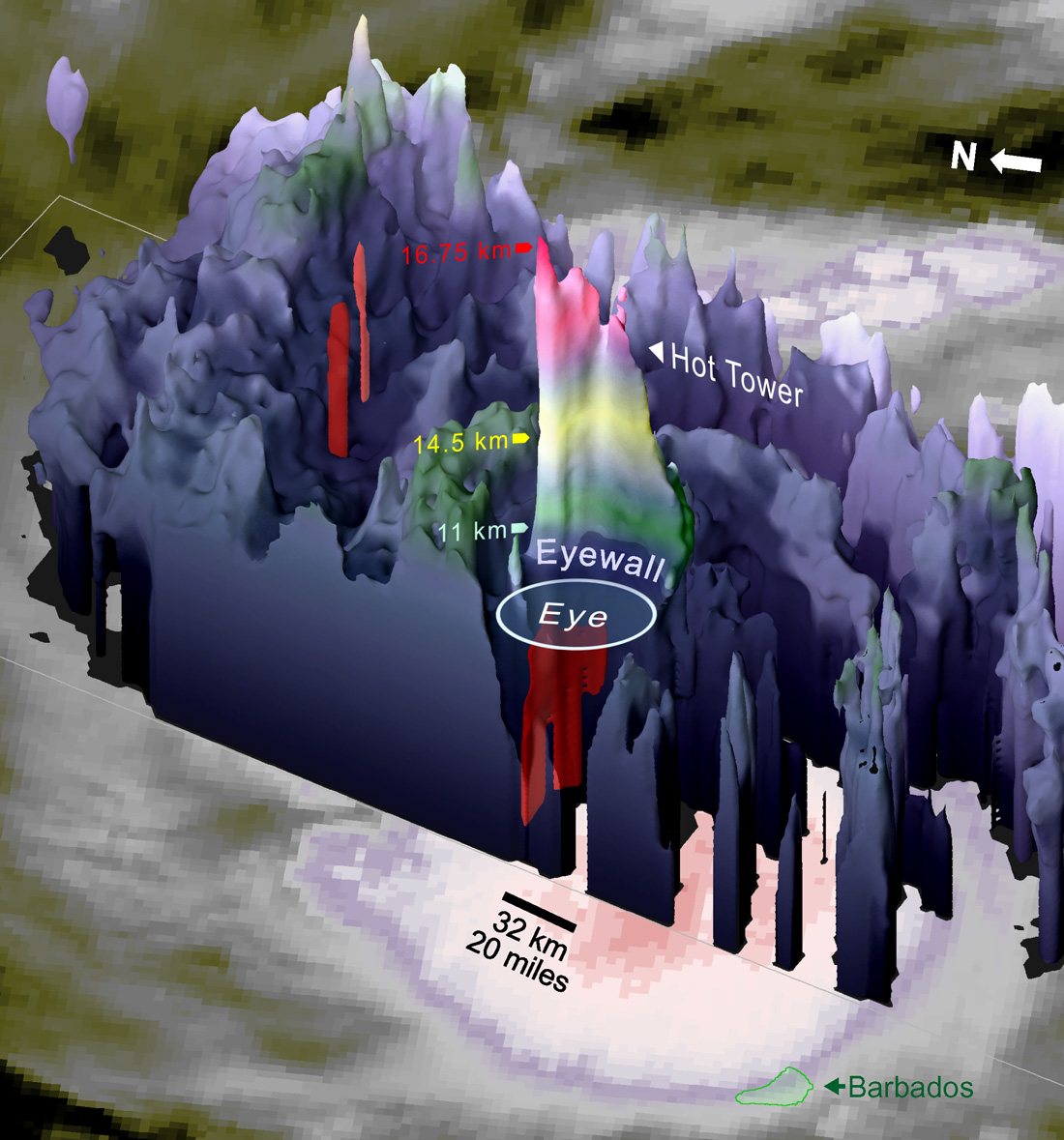
On Sept. 18, NASA's Global Precipitation Measurement (GPM) satellite measured Hurricane Maria's cell at an imposing 10.41 miles (16.75 kilometers) altitude, stretching into the lower stratosphere.
Get the Space.com Newsletter
Breaking space news, the latest updates on rocket launches, skywatching events and more!
A View from GOES-13
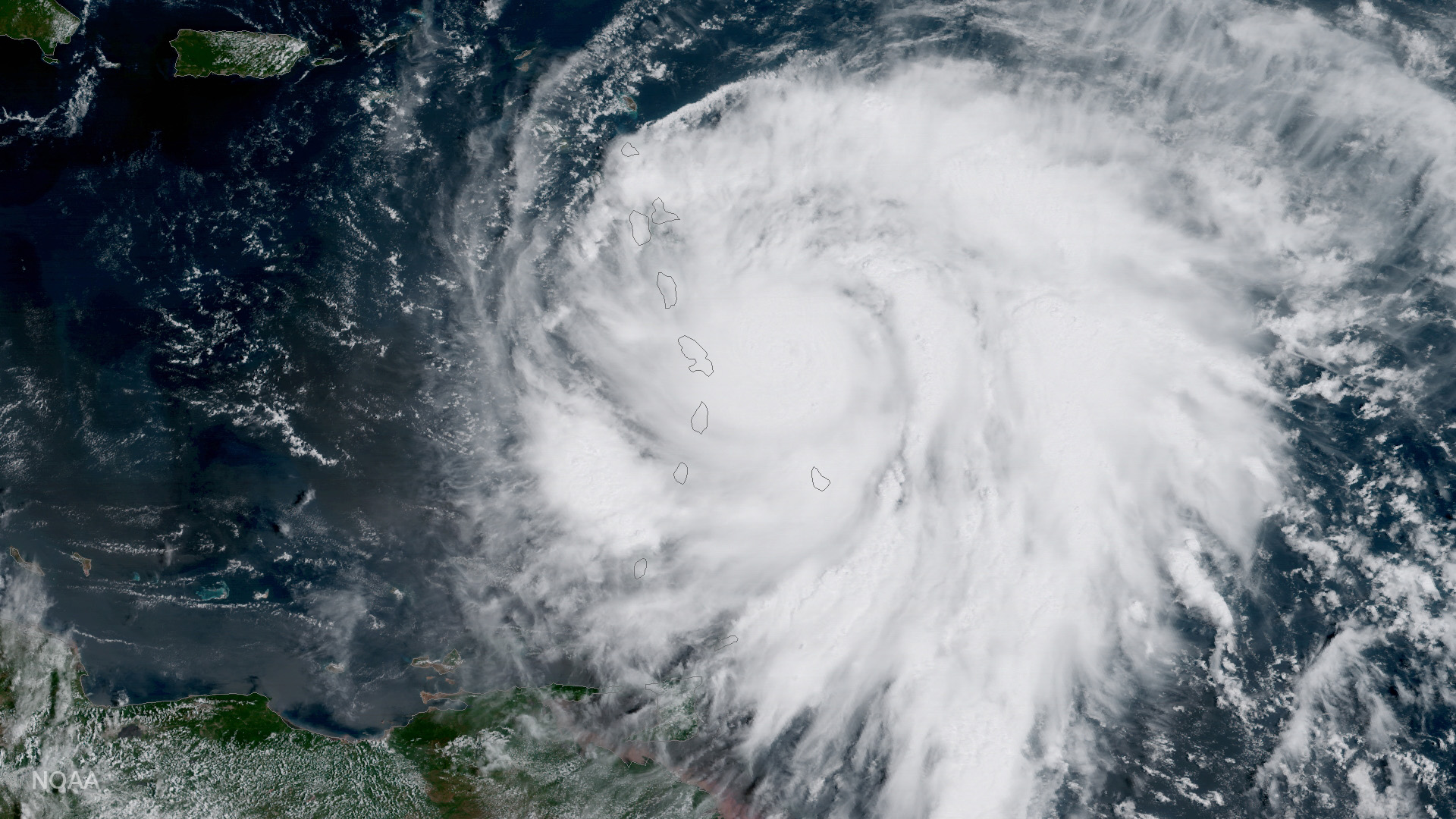
Hurricane Maria is seen by NOAA's GOES-13 satellite (also known as GOES East) as the storm was located about 60 miles east of Martinique and moving toward the west-northwest near 10 mph on Sept. 18 at 11 a.m. EDT. At the time, Maria was a Category 3 hurricane. It later strengthened to a Category 5.
Gaining Strength
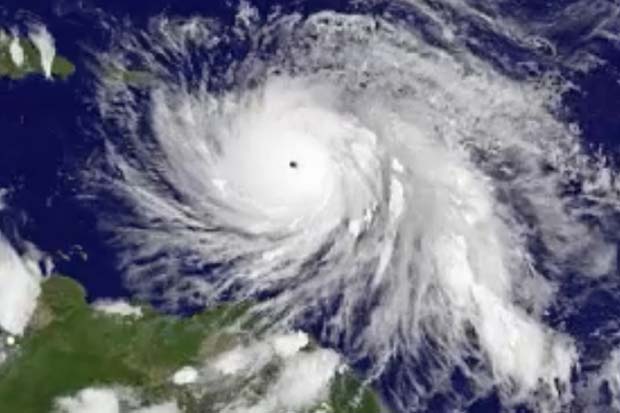
NASA's GOES-East satellite captured this view of Hurricane Maria on Sept. 18 as the Category 3 storm quickly evolved into a Category 5.
Dropping the Rain
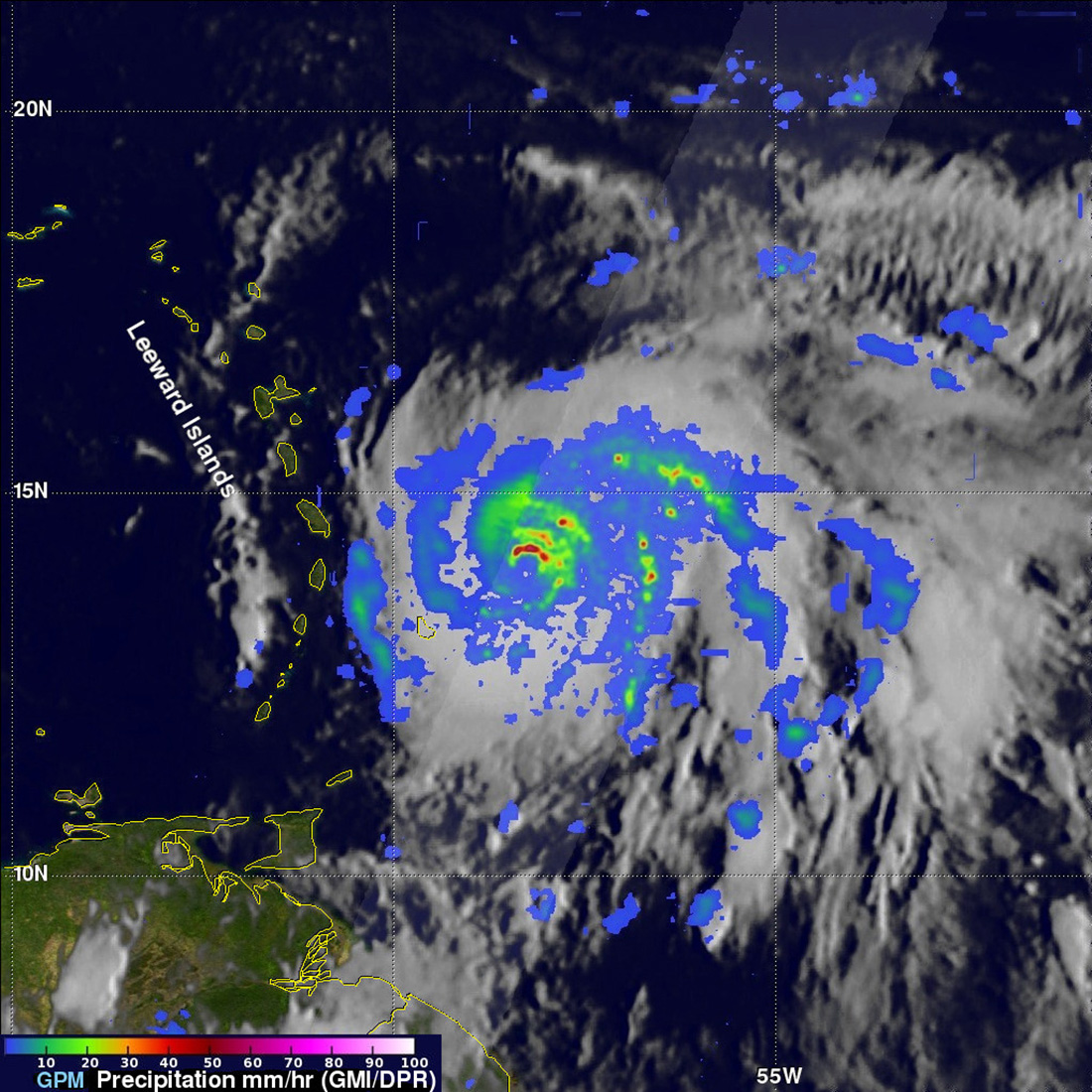
Using the Global Precipitation Measurement (GPM) core satellite, experts found that Hurricane Maria contained falling rain at the rate of over 6 inches (15 centimeters) per hour. The thunderstorms inside Maria measure to more than a towering 9 miles high. The GPM satellite captured this view on Sept. 17 at 10:01 p.m. EDT (0201 GMT on Sept. 18).
Join our Space Forums to keep talking space on the latest missions, night sky and more! And if you have a news tip, correction or comment, let us know at: community@space.com.

Christine Lunsford joined the Space.com team in 2010 as a freelance producer and later became a contributing writer, covering astrophotography images, astronomy photos and amazing space galleries and more. During her more than 10 years with Space.com, oversaw the site's monthly skywatching updates and produced overnight features and stories on the latest space discoveries. She enjoys learning about subjects of all kinds.









